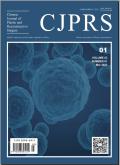Enhancing tissue regeneration studies with luciferase-transgenic rats and bioluminescence imaging: A comprehensive review
Chinese Journal of Plastic and Reconstructive Surgery
Pub Date : 2024-12-01
DOI:10.1016/j.cjprs.2024.09.003
引用次数: 0
Abstract
Bioluminescence imaging (BLI) in rodent models has revolutionized preclinical research in recent decades, enabling precise and noninvasive observation of cellular and molecular processes in vivo. Among various bioluminescent systems, the firefly luciferase-luciferin system is one of the most widely employed for in vivo cell tracking. This comprehensive review focuses on using luciferase-transgenic (Luc-Tg) rat models, known as firefly rats, in conjunction with BLI to investigate tissue regeneration and stem cell dynamics. Compared with other imaging modalities, BLI offers enhanced tissue penetration, reduced background noise, and the capacity to perform longitudinal studies with fewer animals, aligning with ethical research principles. Applications of Luc-Tg rats in fat grafting, soft tissue expansion, hair growth cycle analysis, and other skin studies are discussed, demonstrating the versatility and precision of BLI in tracking complex biological processes. Integrating advanced analytical and genome-editing techniques with BLI promises to enhance data interpretation’s accuracy and efficiency. These advancements have deepened our understanding of the cellular fate and mechanisms underlying tissue regeneration, presenting promising avenues for optimizing therapeutic strategies in reconstructive surgery and regenerative medicine. Combining luciferase reporter genes and BLI is crucial to unraveling complex biological phenomena, advancing soft tissue regeneration research, and developing innovative therapeutic strategies for various medical conditions.
荧光素酶转基因大鼠促进组织再生研究及生物发光成像:综述
近几十年来,啮齿动物模型的生物发光成像(BLI)已经彻底改变了临床前研究,使体内细胞和分子过程的精确和无创观察成为可能。在各种生物发光系统中,萤火虫荧光素-荧光素系统是最广泛应用于体内细胞跟踪的系统之一。这篇综合综述的重点是利用荧光素酶转基因(Luc-Tg)大鼠模型,即萤火虫大鼠,结合BLI研究组织再生和干细胞动力学。与其他成像方式相比,BLI具有更强的组织穿透性,更低的背景噪声,并且能够使用更少的动物进行纵向研究,符合伦理研究原则。讨论了Luc-Tg大鼠在脂肪移植、软组织扩张、毛发生长周期分析和其他皮肤研究中的应用,展示了BLI在跟踪复杂生物过程中的多功能性和准确性。将先进的分析和基因组编辑技术与BLI相结合,有望提高数据解释的准确性和效率。这些进展加深了我们对细胞命运和组织再生机制的理解,为优化重建手术和再生医学的治疗策略提供了有希望的途径。结合荧光素酶报告基因和BLI对于揭示复杂的生物现象、推进软组织再生研究以及开发针对各种疾病的创新治疗策略至关重要。
本文章由计算机程序翻译,如有差异,请以英文原文为准。
求助全文
约1分钟内获得全文
求助全文
来源期刊

Chinese Journal of Plastic and Reconstructive Surgery
Surgery, Otorhinolaryngology and Facial Plastic Surgery, Pathology and Medical Technology, Transplantation
CiteScore
0.40
自引率
0.00%
发文量
115
审稿时长
55 days
 求助内容:
求助内容: 应助结果提醒方式:
应助结果提醒方式:


